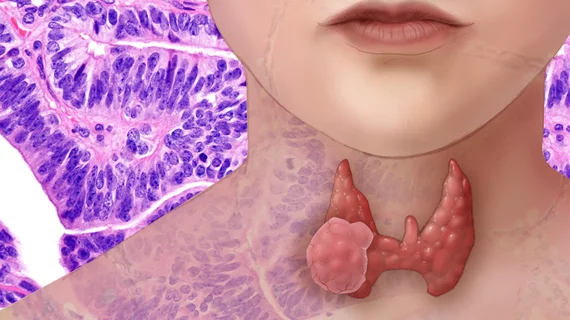New imaging device may bypass ultrasound for thyroid cancer screening
A new imaging device promises to overcome the limitations of traditional ultrasound for thyroid cancer screening and spare many patients from undergoing unnecessary surgeries.
The Laser and Ultrasound Co-analyzer for Thyroid Nodules, or LUCA, device is a multi-modal platform combining near-infrared optical imaging with ultrasound. It started back in 2016 and has since helped clinicians improve their diagnostic specificity and sensitivity, researchers explained in Biomedical Optics Express.
The imaging project was recently tested in a small group of patients, accurately classifying 13 benign and four malignant nodules. But its developers see plenty more opportunities ahead.
“The need to improve the current standards of thyroid cancer diagnosis has driven us to participate in this multidisciplinary project,” Mireia Mora and Ramon Gomis, both from the August Pi i Sunyer Biomedical Research Institute (IDIBAPS) in Barcelona, Spain, said in a statement. “We have taken the first steps in preclinical testing, but are sure that with this technology we will be able to avoid unnecessary surgeries and thus improve the quality of life of our patients".
Those initial steps first started with European Union funding, which allowed the team to combine near-infrared light, time-resolved spectroscopy, diffuse correlation spectroscopy and ultrasound into a single device.
Since then, the LUCA tool has been independently tested using phantom datasets and on a healthy model patient. As previously mentioned, it was recently moved into the clinical realm to screen 18 healthy volunteers and 47 with thyroid nodules. It classified findings with 100% sensitivity and 77% specificity.
The device is made from low-cost materials and may extend beyond thyroid screening, enhancing breast, abdominal, and head and neck cancer screening, the authors suggested.
“We have learned a lot and are anxious to continue working in this line of research because we believe that this technique could substantially improve the quality of measurements, narrow down diagnoses and helps asses in [the] possible treatments of patients," said Turgut Durduran, PhD, coordinator of the LUCA project.

